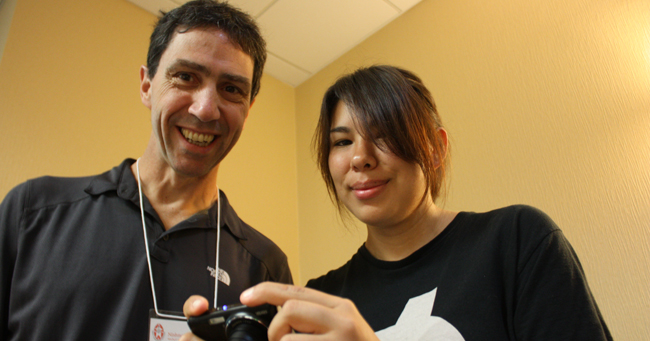Youth discuss suicide at safeTalk training

By Heather Campbell
SUDBURY – Having the skill to talk about suicide can make a significant impact in communities is the message shared by the Life Promotion Project: The Gift We Carry.
“Our work plan includes three distinct prongs to it,” said project coordinator Loretta Sheshequin. “First is safeTALK training for community-based workers. Second is for youth to be trained and the third is a youth-focused promotional campaign.”
The project is targeting 90 communities across the province. This is a three-year pilot project that is funded by Health Canada and the National Aboriginal Youth Suicide Strategy.
The first year of the project, which started in March 2012, trained sixty-three community support workers in safeTALK, a program that prepares anyone over the age of 15 to talk to people who appear to have thoughts of suicide and connect them to suicide first aid resources.
Two more workshops in Toronto and Thunder Bay will train youth from 90 communities. In addition to the safeTALK training they are equipping them with digital cameras to capture images of hope.
The youth that are being trained in the safeTALK skills will be certificated suicide alert helpers who are armed with basic skills to recognize those with suicidal thoughts. They will have the necessary skills to intervene with some confidence.
“We want to promote life, hence the name of the project,” said Sheshequin.
The youth participate in a one and a half day workshop, led by photographer Scott Chisholm, to learn how to handle the camera and manipulate images.
“The ultimate goal is for them to go back to their community and capture life and why they choose to live,” Chisholm explained.
Harley McDowell from Sheguiandah First Nation attended the two-day workshop in Sudbury at the Radisson Hotel.
“It has been interested to learn new stuff about photography and I like Scott’s perspective. We share the same views about how a photo captures the moment,” said McDowell about the session.
Chisholm lost his father to suicide as a teenager and received his first camera from his mother shortly after his loss. He has been advocating for gatekeeper training through his own project, Collateral Damage (www.leftbehindbysuicide.org), and has found that the biggest obstacle we face is being more effective with suicide prevention is that we don’t know how to talk about it.
It became less about the impact of losing his father and more about preventing and learning about suicide on behalf of his two sons.
The photography portion of the project is built on Photovoice, a program aimed at using photojournalism to promote social change by community members. The youth are given digital cameras as a way to voice where they see hope in their own communities. Chisholm gave them the instruction to find those images that if others saw what they saw, they just might understand.
“I knew how big that was to be giving them cameras. I shared the story of my mother giving me my first camera at eighteen and how it has never left me. It became a big part of how I express who I am,” said Chisholm.
The Life Promotion project will be using the photos for the youth-driven promotional campaign in the third year, which also includes public service announcements that will air during the campaign.
The province-wide project is the collaboration between the Union of Ontario Indians, Nishnawbe Aski Nation, Association of Iroquis and Allied Indians and the Chiefs of Ontario.
To register for the next two workshops in August, visit http://www.nan.on.ca/upload/documents/youth-photovoice-poster—july-16-2013.pdf


